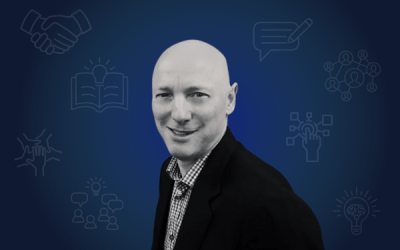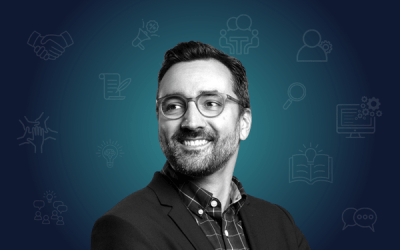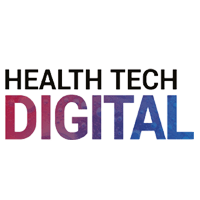AI’s Vital Role in Unmasking Hidden Health Risks in Disadvantaged Communities
Imagine a world where artificial intelligence (AI) can help identify and support at-risk patients in disadvantaged areas. This is no longer a distant dream, but a reality that is becoming increasingly achievable.
In a recent podcast conversation between Chad Kaleky and Matt Heys, Senior VP of Artificial Intelligence at Cyferd, the critical topic of using AI to identify at-risk patients in disadvantaged areas emerged. Heys, who brings valuable insights from his background in the UK’s National Health Service (NHS), discussed the challenges faced in predicting mental health problems, particularly the risk of suicide or parasuicide, in areas plagued by substance abuse, alcohol abuse, and health inequalities.
Identifying patients at risk of developing serious health issues is a complex and often resource-intensive task, particularly in disadvantaged areas. Such regions are often characterized by limited access to healthcare services, high prevalence of chronic conditions, and socioeconomic disparities. Identifying those who are most at risk in these communities becomes a critical challenge.
One key challenge in predicting mental health risks in disadvantaged areas is data integration. Heys highlights the importance of combining data from various sources, including hospital trusts, primary care facilities, and even patient-generated data. This integrated approach allowed the NHS to create a baseline model for predicting patient risk. However, this model still lacked specificity, making it challenging to identify the patient’s risk level in real-time or within the last few months.
“One of the things we tried to do as sort of a neighbourhood or as an area, multiple organizations working together, was create a model using data that could predict the likelihood of a patient’s going into mental health problems, particularly going to have patients that are at risk of suicide, or parasuicide.”
“By joining this data together, we could create something good. But it still wasn’t good enough to say, okay, what’s the patient’s risk right now? What’s the patient’s risk within the last few months? We didn’t have quite live enough information.”
Another challenge is that healthcare organizations in many countries, including the UK, often operate in silos. This means that when a patient seeks help for mental health problems, they are referred to a separate mental health organization, resulting in long waiting times and a lack of continuity in care.
AI presents a promising solution to the challenges outlined above. By leveraging its ability to sift through vast amounts of data and identify patterns that might go unnoticed by human healthcare providers, AI can help identify at-risk patients early and offer timely interventions.
Here are some of the ways in which AI can make a significant impact:
- Predictive analytics: AI-driven predictive analytics can analyze patient data from a variety of sources to identify potential risk factors and early warning signs of serious health issues. This can help healthcare providers proactively identify and support patients at risk
- Real-time monitoring: AI-powered wearable devices and IoT sensors can continuously monitor patients’ vital signs and health metrics, enabling timely interventions, especially in disadvantaged areas where patients may have limited access to regular healthcare check-ups
- Improved diagnostics: AI can enhance diagnostic accuracy by analyzing medical images such as X-rays, MRIs, and CT scans. This is particularly vital in areas where access to specialized medical expertise is limited
- Identifying socioeconomic determinants: Health disparities often result from socioeconomic factors, such as income, education, and access to healthy food. AI can analyze these determinants to provide a more comprehensive view of health risks, enabling healthcare providers to tailor interventions and support systems accordingly
- Enhanced telemedicine: AI-powered telemedicine platforms can provide personalized recommendations and connect patients with specialists, bridging the geographical gap in healthcare access in disadvantaged areas
AI is not meant to replace human healthcare providers but to complement their expertise. AI-driven tools can help healthcare professionals make more informed decisions, allocate resources efficiently, and provide timely interventions. This synergy between AI and human care can significantly improve the quality of healthcare in disadvantaged areas.
“That’s one of the areas that I’m trying to solve in my work at Cyferd now, which is finding ways to capture more structured information and information from patients as well.”
By leveraging predictive analytics, real-time monitoring, improved diagnostics, and a focus on socioeconomic determinants, AI can assist healthcare providers in identifying at-risk patients early and offering timely interventions. It is a critical step toward addressing health disparities and ensuring that everyone receives the care they deserve.
AI can empower healthcare professionals to provide more timely and effective care to vulnerable populations. As the field of AI continues to evolve, it holds the promise of transforming healthcare and improving the lives of those most in need.
From SageX3 Limits to Full Flexibility: Harvest Pet Products
Seamless Salesforce Integration with Cyferd
How to Fix a Fragmented Tech Stack and Cut Costs
How AI Is Transforming Every Industry in 2025
How to Build AI-Powered Apps That Guide Better Decisions
Case Study: TesTex Transforms Operations with Tick9 & Cyferd
How Cyferd Made Voult Possible – And Why That Matters for Insurance
Why tick9 Partners with Cyferd to Accelerate Results
Optimize Your Tech Stack for Maximum Business ROI
Reimagining Work with AI and Operational Knowledge
Cyferd in the Press
As seen in
Let’s Get Started
Ready to Drive Transformation?
New York
Americas Tower
1177 6th Avenue
5th Floor
New York
NY 10036
London
2nd Floor,
Berkeley Square House,
Berkeley Square,
London W1J 6BD



















